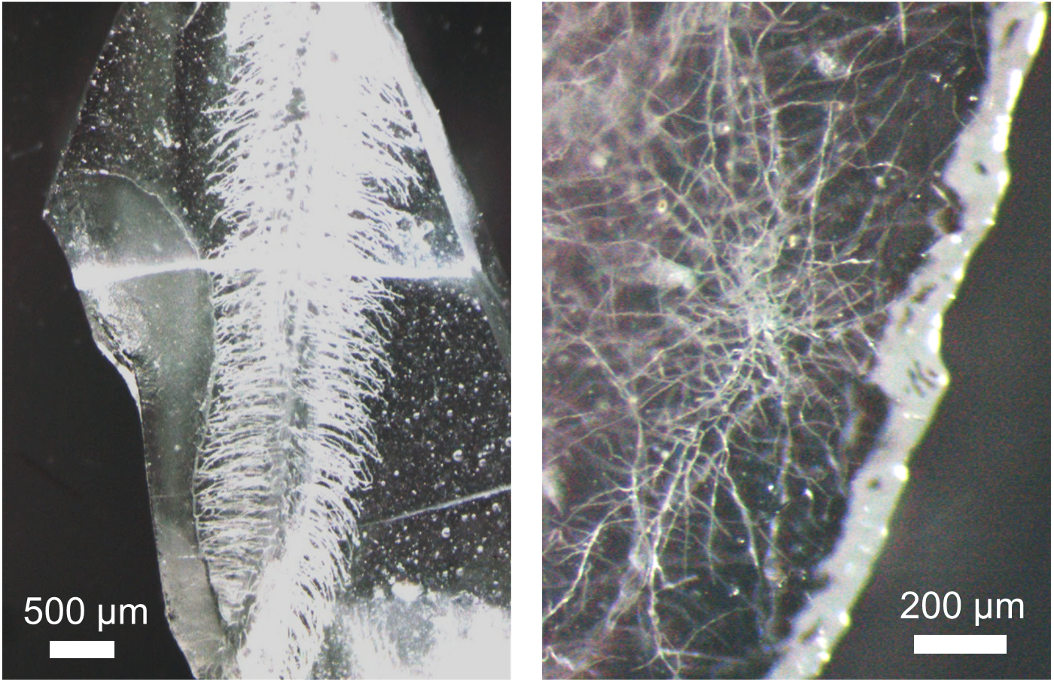Even if you don’t know what 3D microfluidic networks are, that doesn’t change the fact that they have some very valuable potential applications. Scientists have now come up with a much simpler method of making the things, by taking casts of plant roots.
Simply put, a 3D microfluidic network is a series of microscale branching channels that tunnel through a piece of three-dimensional material. The channels are so narrow that they can spread different liquids through the material via capillary action. No pumping is necessary.
Among other potential applications, such networks could be used in lab-grown replacement skin or organs, self-healing materials, and soft robotic devices. However, due to the fact that microfabricating the small channels is such a laborious task, the technology has yet to be widely adopted.
With this limitation in mind, Prof. Fujio Tsumori and colleagues from Japan’s Kyushu University looked at something that already has the desired structure: plant roots. After all, roots are essentially just complicated water-transporting structures that branch through a three-dimensional soil matrix.
The scientists began by creating a soil replacement growing medium consisting of silica nanoparticles, hydroxypropyl methylcellulose resin and water. Seeds from plants such as radish, white clover and ryegrass were then placed in that medium and allowed to germinate.
After the plants had established a good root network, they and the growing media were placed in an oven and heated to over 1,000 ºC (1,832 ºF). This caused the plant material to completely decompose, and it caused the silica particles to melt, fuse, and form into glass.
The end result was a transparent glass plate full of root-shaped microfluidic channels. These channels varied in width from 150 micrometers for the main roots to about 8 micrometers for hairs branching from those roots.

Kyushu University/Tsumori Laboratory
To take the concept one step further, the scientists experimented with growing fungi in media instead of plants. It was discovered that the organisms’ extremely fine root structure, known as hyphae, formed channels in the glass as narrow as 1 micrometer.
Along with the technology’s other potential applications – where matrices other than glass could be used – it could also simply serve as a simpler means of studying the function of plant roots. This in turn could lead to better methods of growing crops.
“The focus of our laboratory is biomimetics, where we try to solve technical problems by looking at nature and artificially replicating such structures,” says Tsumori. “And what better example of microfluidics in nature than plant roots and fungal hyphae?”.
An article about the research recently appeared in the magazine Scientific reports.
Source: Kyushu University
Discover more from USASEOIT
Subscribe to get the latest posts sent to your email.

